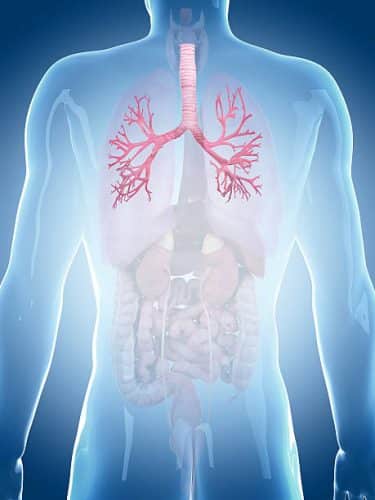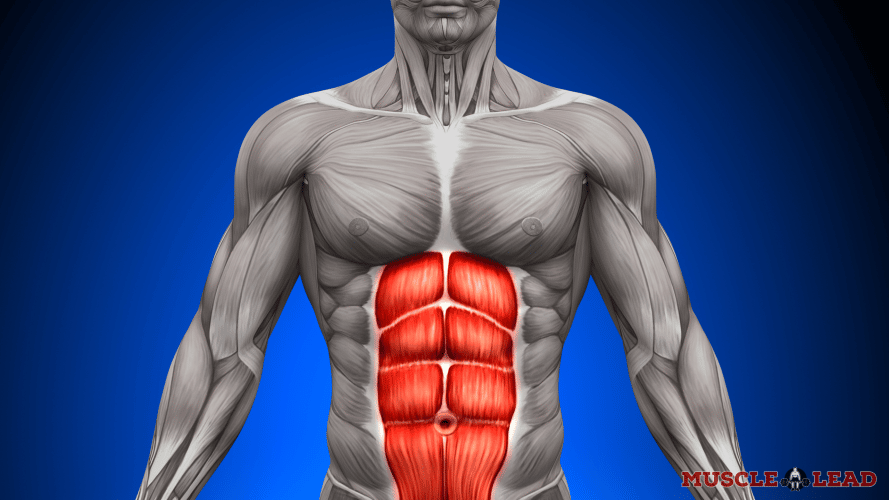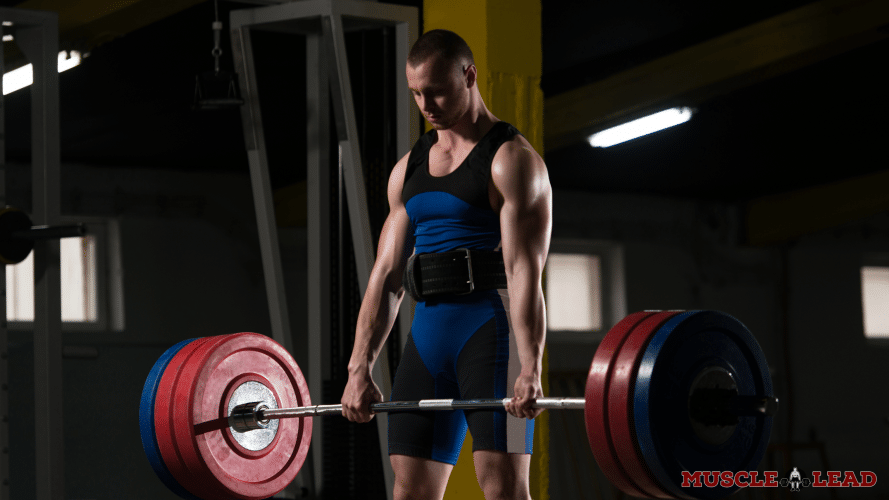Key Points
- Proper breathing is critical for deadlifts because of oxygen uptake, spine safety and movement efficiency & effectiveness.
- Use this easy to follow breathing guide to perform deadlifts properly.
- Understand when to breathe during different specific deadlift intensities.
We may know how to perform deadlifts, but neglect proper breathing techniques.
I am going to outline the optimal deadlift breathing for a safe and effective workout.
We start off by going over why we need to breathe properly during deadlifts, including; oxygen uptake, spine safety, and deadlift efficiency/effectiveness.
So how should you breathe during the deadlift? At the beginning of the deadlift, the bottom of the movement, breathe and brace to lift the weight off the ground. Do this by taking a deep breath in to your belly and expand outwards like a balloon. The proper breathing technique during deadlifts will help stabilize your spine, increase oxygen uptake, and raise the weight efficiently.
Why Do You Need to Breathe Properly During Deadlift?
Oxygen Uptake
Throughout our lifespan, we are constantly breathing air via the nose or mouth. This air is concentrated with oxygen.

Once the air passes through the throat, the diaphragm (stomach muscle) expands to make space for the air to enter.
The air is then transferred through the bronchi, which are tubes connected to each lung.
Once the air reaches the lungs, we have thin branch-like structures called Bronchioles, that pass the air to tiny air sacs called the alveoli.
The alveoli separate the good oxygen and bad carbon dioxide from the air.
The oxygen then travels through small blood vessels called capillaries, to be combined with blood.
A protein in red blood cells called hemoglobin then transports the oxygen-rich blood towards the major organs and muscles of the body to continue functioning.
Think of hemoglobin like a cable car, but instead of people, it carries oxygen in the body via myoglobin (diffuses oxygen).
On the other hand, the bad carbon dioxide is breathed out of the lungs and mouth or nose, while the diaphragm relaxes and deflates.
During the deadlift our oxygen needs are higher, hence why we breathe faster. Let’s say that you were not breathing properly during the deadlift, sufficient oxygen may not be able to reach the brain and muscles, with a higher risk, of fainting and falling, followed by blunt force Injury.(1)
Check out this compilation of lifters(2) who could have been holding their breath for far too long or not breathing deep enough, resulting in fainting. WARNING! This video is not for the faint hearted.
Spine Safety
Inhaling and holding the breath during the part of the deadlift, allows you to brace the core stability muscles surrounding the midsection.
This simple technique keeps the spine straight and prevents curving, bending backwards or to the side, which would pose a spinal injury risk.
The main muscles of the core that would be activated with better breathing have been listed below:
Diaphragm
This is the internal core muscle responsible for expanding and relaxing the chest to draw in and expel air.
Rectus Abdominis
The six-pack muscle that we are all too familiar with is at the front of the stomach. The main function of the rectus femoris is to help control the forward lean movement of the trunk.

Erector Spinae
The erector spinae sit just outside the spine, this is the main muscle group to keep the spine neutral during the deadlift.
Transversus Abdominis
These are the deep abdominal muscles, and their main action is to increase intra-abdominal pressure.
Obliques
You will find the internal and external obliques (deep and superficial), which help flex and twist the trunk.
Multifidus
Large deep muscles surrounding the spine, which for the most part promote spinal stability.(3)
Deadlift Efficiency & Effectiveness
As mentioned, holding the breath and bracing the core stability muscles will keep the spine somewhat locked.
This may maintain the lifting energy on the working muscles, Instead of losing it through spine movements.
In turn, this can promote a better deadlift by activating more skeletal muscle and possibly getting out more reps.
How to Breathe During Deadlift
To teach you the most optimal way of breathing during the deadlift, I have put together a 15 step guide. I have emphasized steps 9, 11, and 14 as they highlight proper deadlift breathing.
STEP 1: Find a clear space in the gym suitable for deadlifting with the barbell deadlift. Usually the squat rack is great.
STEP 2: Place a Barbell on the floor. Use an Olympic style one with knurls.
STEP 3: Load the Barbell depending on your training phase, i.e., 90% intensity x 5 reps x 5 sets (strength training). For breathing prep, use a light load.
STEP 4: Stand with your shins inclined with the center of the barbell. Shins should touch the barbell.
STEP 5: Place the feet around hip-width apart. Different foot positions change the variation of deadlift you do.
STEP 6: Grasp the barbell with an overhand grip shoulder width apart. Change your grip as you like.
STEP 7: Drop the hips, bend at the knees and shift your weight to your heels.
STEP 8: Change the position of your feet, if needed. You can leave this to your anatomy.
STEP 9: Take a deep breath with the intention of drawing the air towards the bottom of the stomach.
STEP 10: Brace the muscles on the trunk and the core all around. You should feel everything brace at this mark.
STEP 11: Hold your breath. Begin taking the slack out of the barbell.
STEP 12: Press from the ball of the foot while straightening the knee/hips. Your torso should remain straight, don’t round your back.

STEP 13: Finish by bringing the weight up and pinning the shoulder blades backwards. Depress your shoulders as well.
STEP 14: Breathe out and finish at the top of the movement.
STEP 15: Drop the bar back to the starting point, then repeat the movement.
Deadlift Intensity When Breathing Technique is Important
Ideally, we are looking for moderate to high-intensity deadlifts between 70-100%.
You might be asking why? So basically during these intensities is where keeping the spine in a neutral position is vital, as it is riskier for spinal loading and injury.
Furthermore, without proper breathing techniques, there is also an increased risk of getting a lack of oxygen supply to the brain, which may result in fainting and blunt force trauma.
These techniques may aid in lifting performance, be it the efficiency of each rep or maximal strength lifting.
During lower intensities of >70%, the highlighted breathing technique can still be useful, but not as important. As long as you are breathing, you are good to go.
Final Thoughts
All in all, we have explained how to breathe during the deadlift. We have learned that oxygen is crucial for the muscles and organs to keep them functioning normally.
Furthermore, we now understand how breathing can support core stability, which can keep the spine in a safe, neutral position while performing the deadlift. Not to mention, a neutral spine can keep lifting energy on the working muscles for a more efficient and effective lift.
Remember the 15 step deadlift guide and especially take note of steps 9, 11, and 15 which highlight proper deadlift breathing techniques.
Last but not least, you should always think about proper breathing techniques, but they can become more vital during higher-intensity lifting. This is because it can cut the risk of injury and better your chances at hitting your heavy lifts.
FAQs
I have seen lifters hold their breath for too long or not breathe enough during the concentric phase of the deadlift, resulting in fainting or not being able to lift effectively.
Holding the breath during the upward part of the lift allows you to brace the core effectively and keep the spine in a safe position. It may also help the efficiency and effectiveness of the lift by keeping the tension on the muscles instead of losing it through spine movements.
So you know when we talk about holding your breath and bracing your core stability muscles, this is known as the Valsalva maneuver modified for the barbell deadlift.
Most certainly! Holding your breath during the concentric phase could be useful. For example, the upward phase of the squat, bench press, overhead press, leg press, bicep curls, etc.
References
- Radok, Z., Zhao, Z., Koltai, E., et al. ‘Oxygen Consumption and Usage During Physical Exercise: The Balance Between Oxidative Stress and ROS-Dependent Adaptive Signaling’ Antioxid Redox Signal. 2013;18(10):1208–1246
- Oliva-Lovano, J.M., &., Muyer, J.M. ‘Core Muscle Activity during Physical Fitness Exercises: A Systematic Review’ International Journal Of Environmental Research And Public Health. 2020; 17(12):4306
- Hani (2020) ‘the top deadlift pass outs compilation **NOT FOR FAINT OF HEART’ Available at: https://youtu.be/25vXEsauv8U (Accessed 24/12/2022)
More on Deadlifts:





